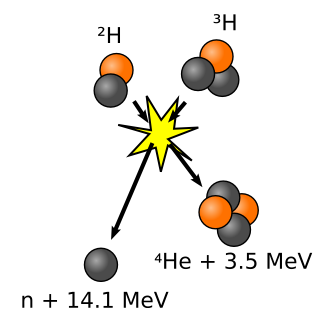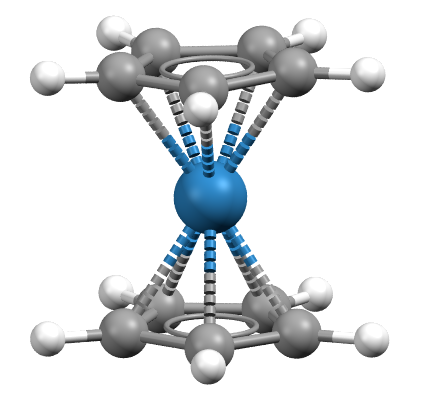Hassium
Hassium:

A cartoon view of the synthesis of Hassium
Facts about Hassium:
- Hassium: Hassium is a synthetic element. Its properties haven’t been studied experimentally, but it is expected to behave like Ruthenium and Osmium.
- Fun fact about Hassium: Hassium is named for the German state Hesse, where researchers worked to prove the existence of this element.
- Chemical symbol: Hs
- Atomic number: 108
A crystal structure celebrating Hassium:

The structure of Osmocene – a “sandwich” complex where Osmium(blue) is situated between two 5-membered carbon (grey) rings.
Facts about this structure:
- Formula: C10 H10 Os
- Structure name: Osmocene
- Fun fact about the structure: The 5-membered carbon rings, known as cyclopentadienyl (Cp) rings, adopt the much less common “eclipsed” conformation in Osmocene, as it is believed would occur in Hassocene as well.
- CSD refcode: SINWER (What’s this?)
- Associated publication: J.C.A.Boeyens, D.C.Levendis, M.I.Bruce, M.L.Williams, J.Crystallogr.Spectrosc.Res. (1986), 16, 519, DOI: 10.1007/BF01161040
More about Hassium:
Hassium is a synthetic element with unknown chemical properties, though researchers believe it will behave like Ruthenium and Osmium which sit in the same group in the Periodic Table. The most stable isotope of Hassium has a half-life of 9.7 seconds – which means once it is made, it doesn’t last for very long!
Learn More About the International Year of the Periodic Table (IYPT) in Crystals Project:
This project (#IYPTCrystals) is part of the International Year of the Periodic Table celebration (#IYPT2019), read more about the project here.
You can follow us on social media; search for #IYPTCrystals or follow The CCDC on X @ccdc_cambridge on Facebook ccdc.cambridge, on Instagram ccdc_cambridge or on YouTube CCDCCambridge.
Understand some of the terms and concepts used with our Frequently Asked Questions page here.
A 3D visualization showing Hassium in real crystal structures: